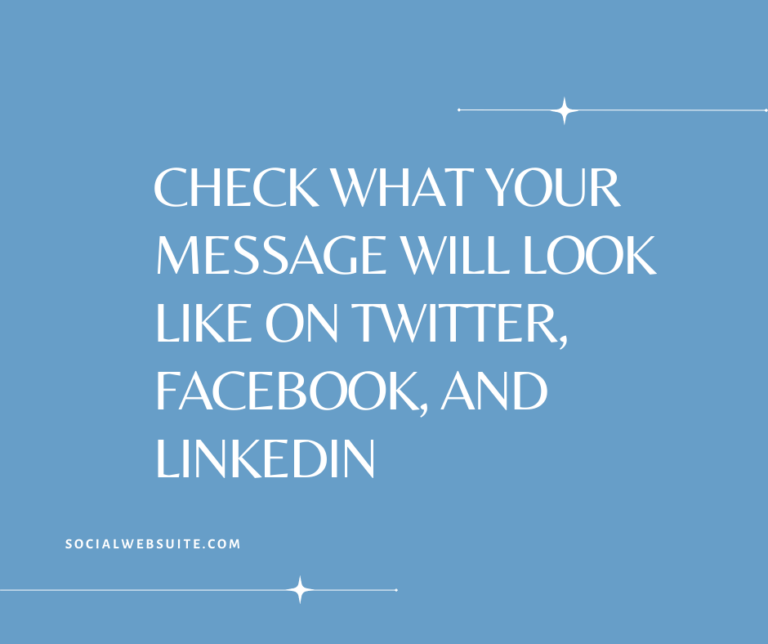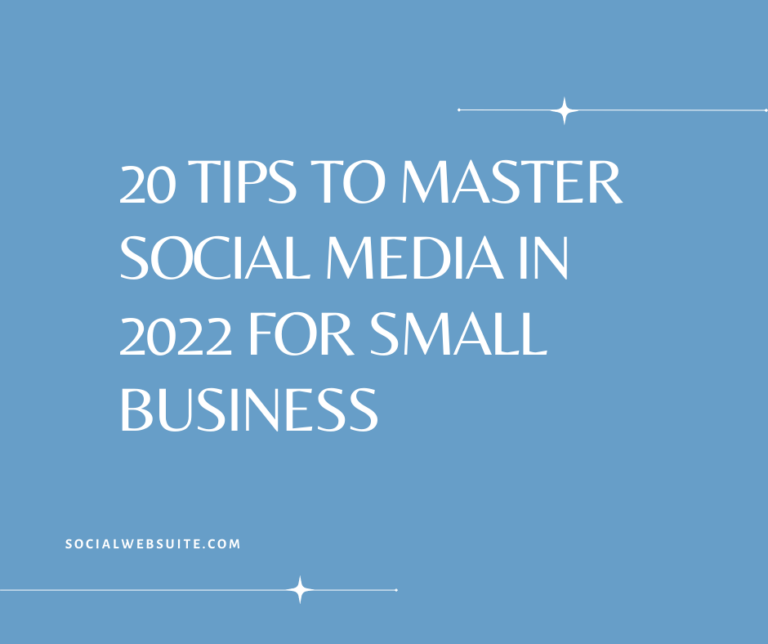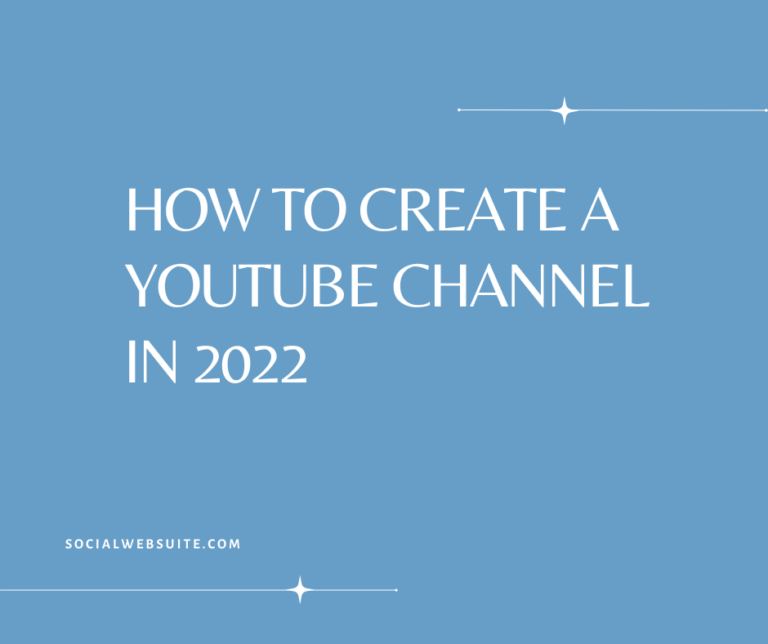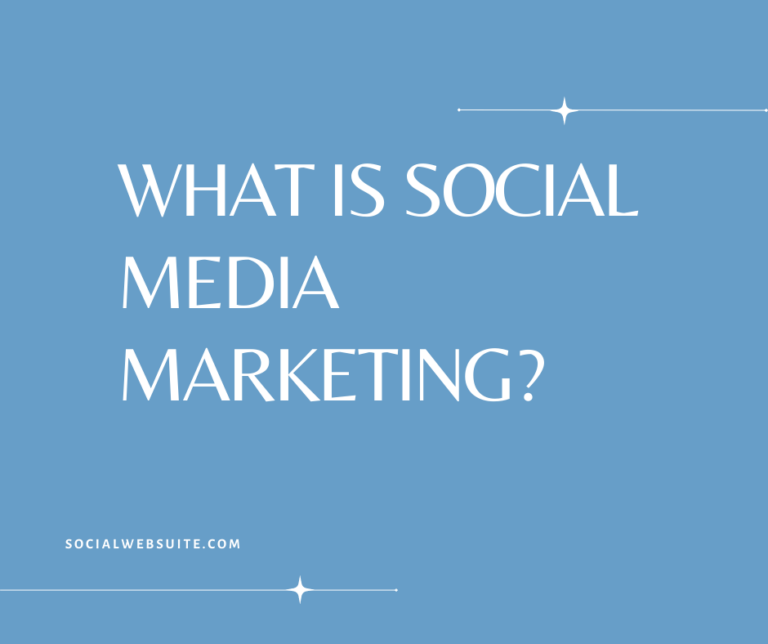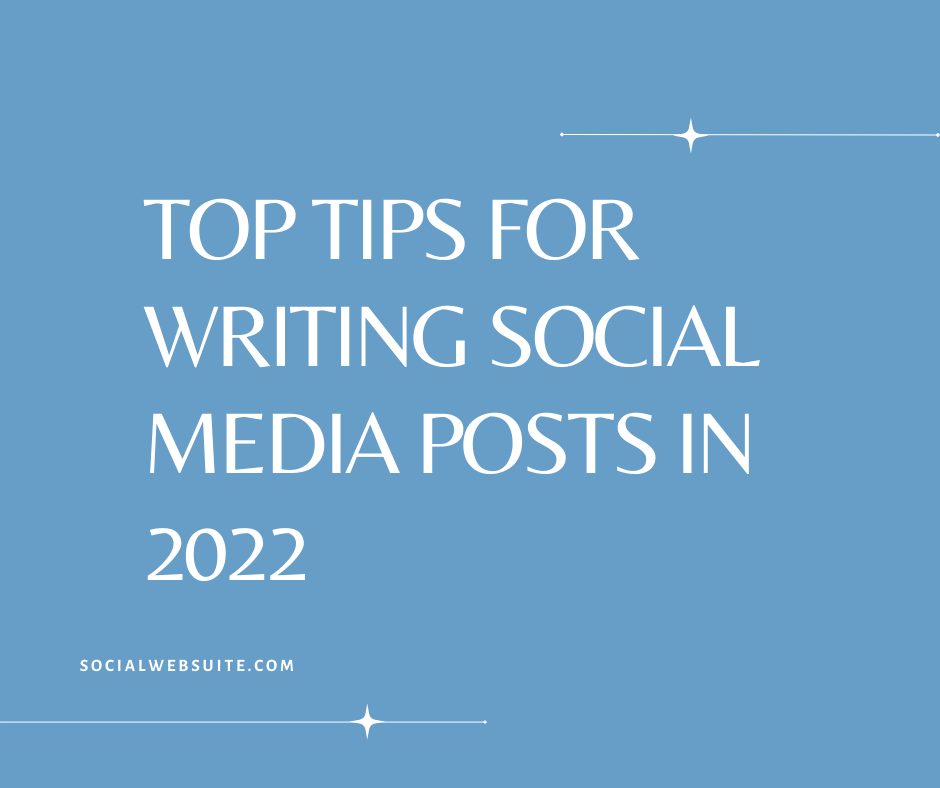
Social media is one of the most effective ways for brands to communicate with customers anywhere. Data measured in January 2022 shows that roughly 4.62 billion people worldwide use social media. That’s about 58.4 percent of the global population. Facebook is the most popular social media site, with an estimated 2.910 million users, followed by YouTube, WhatsApp, Instagram, Facebook Messenger, WeChat, TikTok, etc.
Different social media sites have unique algorithms, guidelines, and even users. For example, Facebook is for everyone, but the people on LinkedIn and Pinterest are mostly professionals. Therefore, how you talk on Facebook has to be different from how you communicate on other social networks.
The best part is that you don’t have to use a lot of trial and error to figure out what strategies work best for which social media networks. Monitoring posts to see which ones generate the most engagement is still important. However, when it comes to crafting good posts, you don’t have to start from scratch. You can just follow the formula established by successful brands.
The top performing social media posts have the following in common:
CASUAL VOICE
The most effective social media marketers recognize that social media accounts are not meant to be exact copies of brand websites. Even if your brand is serious, you will still need to adopt a relaxed and informal tone on Facebook, Instagram, and Twitter. Write and post to develop relationships rather than being too promotional and formal. Remember that people are on social media to connect with friends and engage with brands beyond the colorless corporate-speak of brand websites.
However, while you should communicate in your target audience’s language, keep your values in mind. Your posts need to reflect the voice of your brand. Your brand’s voice is influenced by your company’s “Why” story and market segment. This voice must be maintained throughout all posts and content you share.
Also, keep in mind that while being casual on social media is important, you must adapt your tone to different platforms. For example, you might get away with a professional tone on LinkedIn but keep things less professional on Facebook.
BACKED BY RESEARCH
Even the best writers must tailor their work to their intended audience. How else are you going to meet your clients’ needs if you don’t even know them? If you don’t conduct research and understand your audience’s point of view, you risk losing their attention. You must create a persona for your audience, which includes information such as their motivation, interests, desires, lifestyle, values, and challenges, before tailoring your content to include solutions.
The research will also make it easier to write in a language that your audience understands and back up your claims with statistics. Everyone enjoys data as long as the figures are simple to comprehend.
You can also share examples of success stories from prior satisfied clients with your audience to make an emotional connection with them. This will enable them to see themselves succeeding as a result of employing your solutions, and they’ll feel good about you.
PERKY
Brand social media posts should be upbeat and uplifting. This isn’t to say that every post should be happy; there’s a big difference between being happy and positive. You want your posts to excite and inspire your audience, and that doesn’t necessarily imply joyful content.
To inspire your followers to take the next step, your updates, headlines, and captions should be interesting, encouraging, and uplifting, regardless of the circumstances you are experiencing. Use humorous quotes, and share interesting facts and cool videos to make things lively and give your brand an online “persona.” Don’t forget to share success stories from your past satisfied clients as well.
You may opt to express your brand’s viewpoint on some important matters. And while your views may differ from some people’s, it doesn’t mean you engage in online bullying. It’s important to distinguish between taking a hard line and assaulting or criticizing individuals online; otherwise, you risk being canceled.
If you receive a complaint on social media, acknowledge it openly before moving it to private chat. Allowing bad emotions to infiltrate your replies will result in a dark vibe on your sites.
SHORT AND SIMPLE
Facebook, Twitter, and Instagram aren’t places to post long stories or case studies. It is not even necessary to use the complete word count. For example, while the ideal length of an FB post is 40 characters, some of the most liked posts have only 11 words and use video and graphics to emphasize ideas.
The online place is characterized by split-of-a-second assessments and quick decisions. Time is something that people treasure. If you’d like your audience to pay attention to your posts, you must demonstrate that you are not wasting their time. Write as if your audience is in eighth grade. That means avoiding jargon and using short, easy-to-read paragraphs with headings, bullets, and lists.
LinkedIn is the only social media platform to share long-form posts and blog articles because the audience here actually takes time to go through posts and understand your views.
If you’d like to share an article with your followers on Facebook, Instagram, or Twitter, put it on an external site and post a short teaser with a link.
HAVE A CALL-TO-ACTION WITHOUT BEING TOO PROMOTIONAL
Great social media posts include a call to action without being overly commercial. After all, you want your audience to read your post or view your video, then like, share, subscribe, submit comments, or participate in a discussion. However, you don’t want to come out as overly promotional because people might suspect you of having ulterior motivations.
Every time you post, you should be conscious of your CTA. A smart social media post strategy opens with an intriguing question and a call to action. Use CTAs like “subscribe for more” or “watch now!” that are short and to the point. Also, refrain from using many CTAs in one post because that will leave your audience confused.
KEEP THINGS PERSONAL
Great social media posts use pronouns like “I,” “me,” “we,” and “you” rather than the inanimate ones like “the company,” “the team,” or “the client.” After all, people are on social media to connect and engage. You don’t want to appear as if you are lecturing them from your lofty corporate tower. Use conversational language, and remember to write as if you’re speaking personally to each follower.
Don’t be afraid to push the boundary and try to learn more about your community. While starting out on social media can be tough, you’ll get used to it and start communicating effectively.
GOOD SPELLING AND GRAMMAR
Even if you are a fun brand, use a lot of abbreviations, or want to sound as casual as possible, your spelling and grammar must be excellent. Bad spelling and grammar convey the perception that you are not as diligent as you pretend. Even if your material is excellent, visitors will question why you didn’t proofread your work.
Don’t rely heavily on spellchecker software to correct your grammar mistakes. The hint is in the name; such tools only do spell checks. It would be helpful to use native speakers to write and proofread your work before posting.
If you’re targeting an audience in different languages, then use a native speaker to review your words before going live.
GREAT CAPTIONS
Even posts about the world’s top products require great captions, or they will be lost in the social media buzz of celebrities, influencers, and competitors. A caption is a heading or description that goes with a post, summarizing it in a few words to create intrigue. It is the primary source of engagement.
Based on your brand, a great caption might be funny or insightful. Keep the sentences short and link to your product page or blog. Use strong words for emphasis.
BREAK SOME PUNCTUATION RULES TO ACHIEVE DESIRED RESULTS
Even if you’re a real writer, posting on social media isn’t the same as writing a college thesis. Every social media channel has its own algorithms, best practices, and, therefore, tactics for posting. Your posts have to be of certain lengths and convey certain messages, and you may have to break a few punctuation rules to achieve these goals.
Block caps, for example, can be used to generate enthusiasm on Facebook, and they won’t be perceived as impolite or confrontational like when used in SMS or email. Exclamation points can also be used to convey excitement.
To save on word restrictions on Twitter, it’s okay to omit certain words, abbreviations, and punctuations.
It’s cool to hashtag words or completely replace them with emojis on Instagram. In fact, you’re likely missing out on interaction if you don’t employ emojis.
However, just because you are allowed to break a few punctuation rules doesn’t give you an excuse for bad grammar and spelling. Remember the point on good spelling and grammar above. It reflects well on your business and shows that you are as diligent as you claim.
MIX DIFFERENT TYPES OF CONTENT
The most effective content on most social media platforms is video. However, the most successful social media campaigns include a variety of posts such as photographs, infographics, gifs, emojis, memes, blog entries, press releases, links, and so on. Images and videos convey a lot of information in short footage and improve content retention.
Use hashtags as well. On Twitter, Instagram, LinkedIn, and Pinterest, hashtags are especially important. You can choose from popular terms as well as niche-specific phrases. They make your information searchable, shareable, and trendy.
GREAT REPLIES
In addition to posting updates, you will need to respond to inquiries and comments on social media. Otherwise, your posts are not generating engagement.
When it comes to social media responses, you need to know your brand voice and how to interact with your fans. You can engage in a lighthearted back-and-forth if you are a fun brand. However, if you’re a serious company, you have to use a serious tone and provide straightforward replies. In any case, you should train your pr team on how to address client queries online.
You can also write and save responses to common client questions. Saved replies are not autoresponders. They’re pre-written responses for your social media accounts and come in handy when you are in a rush. Saved replies can save you a lot of time and help you avoid spelling mistakes.
Your responses should follow your brand’s style so that your audience has a consistent brand experience across all your social media channels. Remember to be courteous, friendly, and informative, and don’t be hesitant to pass clients on to the support team if they need further assistance beyond what you can provide.
POST OTHER CONTENT AS WELL
Lastly, don’t always post about yourself. Social media users have low patience for self-promotion. You have to keep things interesting; otherwise, they’ll unfollow your pages. Posting interesting content within your niche, even if it doesn’t directly relate to your brand, will help you hold on to your followers.
WRAP-UP
A robust social media strategy is required to build and maintain brand awareness, generate leads, and retain customers. A lot goes into social media posting than just writing stuff up and clicking posts or shares. The best social media posts convey their brand’s values, but in a language followers understand. They are short, sweet, insightful, backed by research, and accompanied by great captions.
You can always try different types of posts to find out what your audience likes. Vary the length and content, and mix up video, images, emojis, gifts, memes, etc. Above all, be patient, it will take you some time to figure out how to engage with your social media followers, but in the end, it will all be worth it. Just remember, social media gives you a lot of rope, don’t hang yourself with it.
